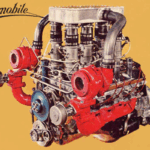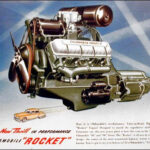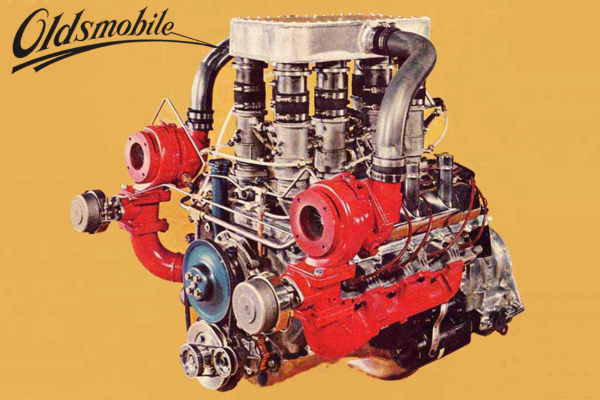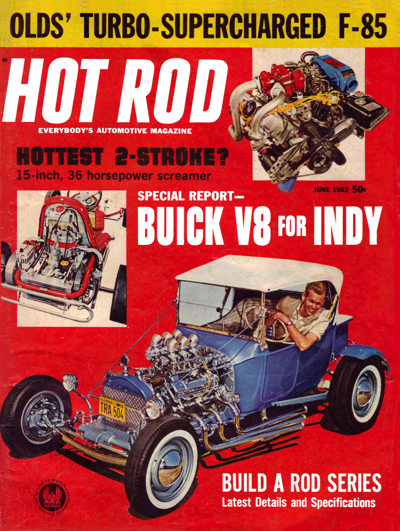OPTIMA® Tech Tip #1 – How to choose an AGM battery
Tech Tips – Powered by OPTIMA® Batteries
performance of the vehicle, its electronics and accessories, but will help extend the life of the battery itself. Here are a few things consumers should be familiar with as they choose a new AGM battery.
Battery Group Size:
Battery group size refers to the standard battery size that will best fit the physical dimensions of the vehicle, as well as the location of its positive and negative terminals. Each make and model of vehicle takes a specific battery group size, although some vehicles can accommodate more than one. Choosing the right group size is as easy as following the recommendation by the vehicle manufacturer as found in the owner’s manual or the checking the reference guide at your local battery retailer or service center.
Choosing the Right AGM Battery to Match Your Lifestyle:
Battery size and engine start performance are important when selecting a battery. However, consideration should also be given to how and where the vehicle is used, cycling performance, engine recovery and the electrical loads a battery must support. OPTIMA® is the battery of choice among performance and off-road enthusiasts, thanks to its variety of benefits over traditional lead-acid batteries. With recent group size additions to the automotive product line-up, OPTIMA batteries now fit 75% of all vehicles on the road. The patented SPIRALCELL® Technology in an OPTIMA battery is what differentiates it from traditional lead-acid and other AGM batteries and is apparent in the product’s six-pack design, which holds the six compressed spiral-wound cells.


OPTIMA REDTOP® = Ultimate cranking battery with performance power
The OPTIMA REDTOP is ideal for starting applications and is designed to deliver the strongest 5-second ignition power. The REDTOP provides engine starting power to vehicles with stock or average electrical loads. Use when the discharge cycle is shallow and the alternator takes over after the battery starts the vehicle. This battery is good for daily drivers, race, classic or show vehicles.
OPTIMA YELLOWTOP® = Dual-purpose deep cycle and starting battery for extreme automotive applications
The OPTIMA YELLOWTOP® is dual-purpose, with premium engine cranking power and deep cycle capacity to support multiple vehicle accessories, demanding electrical systems, and vehicles without alternators. The YELLOWTOP can repeatedly bounce back from deep power drains to full energy capacity, so it can power plenty of electronics and consistently start a vehicle time after time. Lower internal resistance also provides more consistent power output and faster recharges.
OPTIMA® Tech Tip #2 – Charging an Absorbed Glass Mat (AGM) Battery
keep in mind when maintaining your Absorbent Glass-Mat (AGM) battery, including OPTIMA ® Batteries.


Optima Digital 1200 Battery charger
Optima 400 Performance Maintainer and Battery charger
- Newer chargers are keeping up with battery technology. Many newer battery chargers, like the OPTIMA® Chargers™ Digital 1200 12V Performance Charger and Battery Maintainer, have microprocessors that collect information from the battery and adjust the current and voltage accordingly. Some have different settings for charging wet cell (flooded), gel and AGM batteries.
- Battery performance limiter: sulfation. All lead acid batteries can experience sulfation—the formation of lead sulfate crystals upon discharge. Look for a charger with a de-sulfation mode to help condition your batteryand keep it performing at its best.
- Low and slow is best. A low amp charger (1 to 10 amps) is always the best choice for charging any lead acid battery. It’s quicker to charge at higher amperage, but it also generates a lot of heat, which reduces the life of a battery, just like the raging heat of summer.
- Alternators are NOT chargers. Don’t rely on your alternator to do the work of a charger.
An alternator is meant to maintain a battery, not charge it.
- Batteries eventually die. Batteries are a consumable product. No battery will last forever. The goal is to consistently maintain your battery to get the most life out of it.
- Charging Considerations for AGM Batteries
- Different chargers. Different capabilities. Although under normal conditions, most 12-volt automatic battery chargers will work on an AGM battery, the battery will only be charged to about 80 percent of its full capacity. Many newer battery chargers have settings specifically for AGM batteries; some even have separate settings for OPTIMA REDTOP® and YELLOWTOP® batteries, like the OPTIMA ® Chargers™ Digital 1200 12V Performance Charger and Battery Maintainer.
- AGM and gel technology differ. Remember that the technology of an AGM battery is not the same as a gelbattery, which has its own charging requirements. If your charger offers different modes, select the correct one for your battery. If you use the gel setting to charge an AGM battery it won’t fully charge and, over time, it will actually damage your AGM battery.
- No problem charging an AGM at 10.5 volts or greater. Under normal starting conditions, an OPTIMA battery should never experience “at-rest” voltages below 12 volts. Most 12-volt chargers and alternators have no problem recharging an OPTIMA if it has an “at-rest” voltage of 10.5 volts or greater.
- The magic threshold – 10.5 volts. The charging scenario for a deeply discharged AGM battery, one that’s dipped below 10.5 volts, is slightly different. Tips for recovering a deeply discharged AGM battery can be
found in OPTIMA’s tech tip, How to Resuscitate a Deeply Discharged AGM Battery.
For battery charger or maintainer recommendations, contact OPTIMA Batteries Customer Service by calling: 1-888-8-OPTIMA (1-888-867-8462) or emailing info@optimabatteries.com
OPTIMA® Tech Tip #3 — How to Resuscitate a Deeply-Discharged Absorbed Glass Mat (AGM) Battery
Failures are typically caused when a starting battery is used in a cycling application, in which a deep cycle battery is the better choice.
Okay, so now you have a seemingly bad AGM battery, you attach it to your charger and…CLICK. The charger won’t even charge it! “It must be a bad battery!” you exclaim. Or is it? In many cases, OPTIMA batteries that are assumed to be bad may actually be perfectly fine, just deeply discharged.
The great thing about AGM batteries, including OPTIMA REDTOP® and YELLOWTOP® batteries, is that they have incredibly low internal resistance. This allows very high amperage output and for the battery to accept a charge very quickly. An AGM battery, with its low internal resistance, may stump car guys because sometimes it doesn’t work like a traditional flooded lead acid battery.
Here’s the problem: most battery chargers have built-in safety features. A traditional battery that’s at 10.5 volts or less is seen as defective, having either a short, a bad cell or some other defect. The charger “knows better” than to charge a defective battery because the results could be unsafe. But the fact is the AGM battery is just fine; it has simply slipped below the minimum voltage threshold of the charger and the charger doesn’t know what to do with the battery.
Here are three options for bringing that fine AGM battery back to life. So grab your jumper cables and charger and…CLEAR!
Recovery Option #1: The Best Solution – AGM-Specific Chargers
The best method for recharging a deeply discharged AGM battery is to purchase a modern charger that has kept up with battery technology. Many chargers now have AGM-specific settings and de-sulfation steps that help recondition and recover deeply discharged AGM batteries. These are becoming more common, and they work well for all lead acid batteries. They have the additional capability of doubling as a battery “maintainer” for vehicle storage. Some come with additional wiring to permanently attach leads from your battery to an accessible spot on your vehicle. This makes it easy to hook up when you store your car, truck, boat or RV.
The OPTIMA® Chargers™ Digital 1200 12V Performance Charger and Battery Maintainer enhances the performance of OPTIMA and other AGM batteries, recovers deeply discharged batteries and extends battery life. The OPTIMA® Chargers™ Digital 1200 12V Performance Charger and Battery Maintainer is optimized when used with high-performance AGM batteries but has enhanced charging capabilities that can also be used with all traditional types of automotive batteries.
Recovery Option #2: The DIY Solution
This is a recovery method for the do-it-yourselfer using the equipment you’ve got in the garage. With this option, you’re going to trick your charger into charging the deeply discharged AGM battery. Here’s what you need:
- Battery charger
- Jumper cables
- A good battery, preferably above 12.2 volts (It can be an AGM or flooded battery, it doesn’t matter.)
- The seemingly dead, deeply discharged AGM battery
- A watch or timer
Now, here’s what you do:
1. Hook up the good battery and deeply discharged AGM battery in parallel—positive to positive and negative to negative. Do not have the charger connected to the battery or turned on at this stage.
2. Now, hook up the good battery to the charger. Turn on the charger. The charger will “see” the voltage of the good battery, and start providing a charge.
3. After the batteries have been hooked up for about an hour, check to see if the AGM battery is slightly warm or hot to the touch. Batteries naturally become warm during charging, but excessive heat may be an indication that there really is something wrong with the battery. Also discontinue the process if you hear the battery “gassing”—a hissing sound coming from the safety valves. If it’s hot or gassing, STOP CHARGING IMMEDIATELY!
4. Check back every hour to see if the AGM battery has charged to 10.5 volts or above. If it has, disconnect the charger from the wall outlet and remove the good battery from the charger. Now, connect only the deeply discharged AGM battery to the charger. Turn on the charger and continue until the AGM battery reaches a full charge, or until the automatic charger completes the charge process. In most cases, the AGM battery will be recovered.
Recovery Option #3: Enlist the Professionals
If you don’t own a battery charger, you don’t want to make the investment, or you’re not the do-it-yourself kind of guy, this is the option for you.
Take the battery to a professional battery specialist who knows AGM technology. Most specialists are willing to provide “charge and check” procedures free or for a small fee. Auto parts stores are typically not capable of accurately determining an AGM battery’s condition, and many use conductance testers that don’t provide correct readings. Battery specialists like Interstate Batteries and other independent battery distributors are experts who can help determine if your battery is recoverable or not.
OPTIMA® Tech Tip #4 — Proper Battery Storage
Things to Consider Before Storing a Battery
All batteries gradually lose their charge when stored over long periods of time. However, AGM batteries, including high-performance OPTIMA® Batteries, lose their charge much more slowly. This helps to prevent the battery from becoming overly discharged during storage, but it won’t completely protect it from damage. Even when your vehicle is turned off, there still may be a drain on the battery. This is especially true of newer vehicles equipped with computers, alarm systems and clocks that continue to run even when the
vehicle is off. Over time, these will drain a battery to voltages too low to start the vehicle. It could even continue to drain to the point of damaging the battery. You can considerably extend the life of the battery and avoid permanent damage by following these simple storage tips.
In-car Battery Storage
You could take the battery out of your vehicle during storage, but sometimes access can be a challenge. So, it may be easier to leave it in. That’s okay, but you’ll need to disconnect it to prevent drain caused by electronics. First, check the voltage to ensure the battery has a full charge. If it’s not fully charged, give it a boost prior to storage. Then, loosen the negative terminal and disconnect it from the battery. All electrical draw on the battery will cease and your battery will be protected. In spring, the battery will have drained some but should still have enough power to start your vehicle.
Don’t leave it up to the alternator to fully recharge the battery though; that’s not what it’s for. Instead, use a battery charger to top it off. You’ll extend the life of the battery by doing this.
Battery Maintainer
You may want to consider using a battery maintainer to keep the battery at full power during storage. This is the method that OPTIMA Batteries recommends. After your vehicle is stored, just hook up the battery maintainer – with the battery either in or out of the vehicle – plug it in and walk away. This will ensure a full charge when you’re ready for your first drive in spring. (Always remember to follow manufacturer instructions.) Some battery maintainers, like the OPTIMA® Chargers™ Digital 1200 12V Performance Charger and Battery Maintainer, also include ring terminal leads. These will give you easier access to maintain the battery both during storage and during the driving season. Hook up the leads to the battery connections and extend them so they’re accessible from under a bumper or wheel well. The leads can remain there indefinitely, so you’ll never have to open the hood to keep the battery fully charged.
You’ll extend the life of your battery and ensure your vehicle is ready to roll in spring with these simple battery storage tips. Just remember – check the battery’s charge before your first drive no matter what storage method you use.











